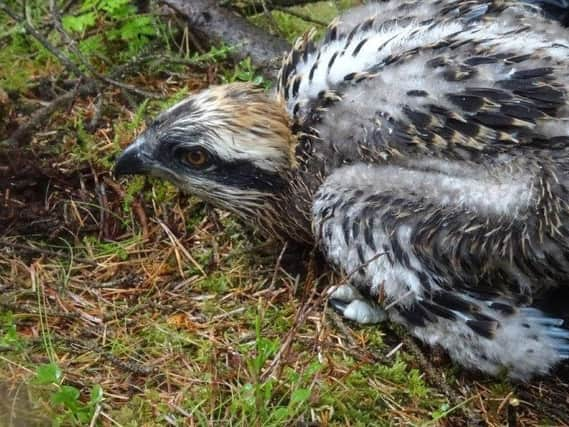Scottish ospreys move to Spain in reintroduction scheme


A total of 12 chicks have been taken from nests in the Highlands and Aberdeenshire this year and relocated to a reserve on the Urdaibai estuary, near the Spanish city of Bilbao.
They are the latest in a total of 60 Scottish ospreys to be moved to the region, and mark the culmination of a five-year initiative aimed at re-establishing a breeding population there.
Advertisement
Hide AdAdvertisement
Hide AdThe release site is used by migrating ospreys during their passage between Scotland and their winter territories in West Africa, so was considered a suitable site for reintroduction.
Ospreys were driven to extinction in the UK in 1916, but returned to Scotland naturally in 1954 and have been nesting here ever since.
There are now more than 200 breeding pairs north of the border.
Healthy chicks have been selected for the scheme from nests on a mixture of private and national forestry land.
The birds have been tagged with both a traditional metal ring and a coloured plastic one, which is inscribed with identifying numbers or letters that make it easier to track migrating birds and spot any that return to Scotland in the future.
Conservationist and ornithologist Roy Dennis, head of the Roy Dennis Foundation, has been leading the operation under a special licence from SNH.
He has also worked on a number of other successful translocation schemes, helping restore populations in England and Wales and as far afield at Andalucia in southern Spain and Switzerland.
He said: “You might call it hard work but it’s really interesting. I find it tremendous that Scotland can help the Basque Country to get back a very special bird and I’m really pleased at how the guys have done the job out there.
Advertisement
Hide AdAdvertisement
Hide Ad“I know that the Basque people are really grateful to Scotland for helping them.”
Early signs suggest the project will be successful after birds from the earliest relocations have returned to their new home after wintering in Africa.
One may even have found a potential mate.
Mr Dennis added: “We know that six or seven males have come back and this year for the first time they have a male spending most of the summer with one of those females so that’s really looking good for next year.”
Alan Campbell, environment ranger with Forest Enterprise Scotland, part of Forestry Commission Scotland, added: “This has been a great project to be involved in.
“It feels really good to know that we have helped reintroduce these magnificent birds to another part of the world where they have been struggling to hold on.
“Roy has been weighing, measuring and ringing osprey chicks on the national forest estate for many years, but over the past five years, when there has been more than one chick in a nest, the larger chick has been selected for translocation.
“Three nests in Moray and Aberdeenshire supplied four chicks this year, a great improvement on last year, when all nests failed due to bad weather.
“The project has improved Scotland’s osprey numbers too because each of the smaller chicks left in the nests – with no competitive siblings - will have received all the food brought to the nest and so would have fledged in really good condition.”